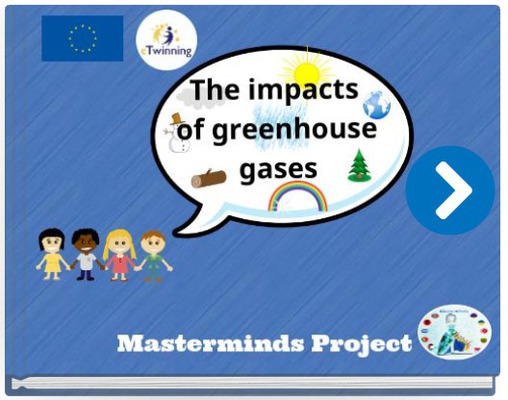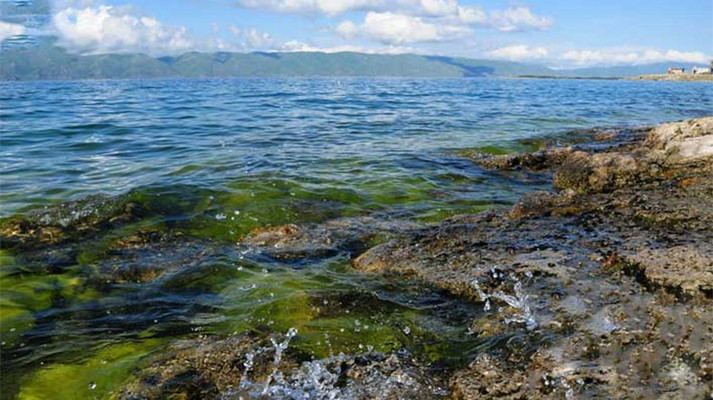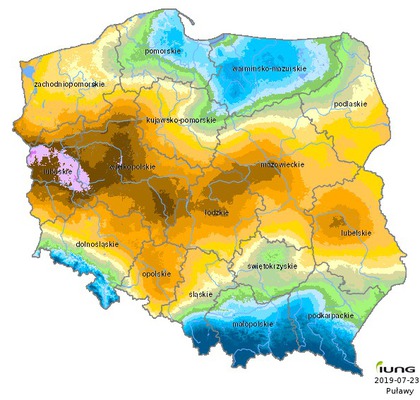
Dear teachers and students,
We are going to describe and discuss the effect of the climate change and greenhouse gases on our countries.
Pupils wrote their expectations and here is the result of the task:-
Pupils' Common Product :

Click here
1) Armenia
BBC report
Ecolur report
Civilnet report
Lake Sevan beaches under algae-related water warnings

This summer the Health Ministry of Armenia has warned people against swimming in some beaches of Armenia’s Lake Sevan amid the potential threat posed by the blue-green algae bloom.
The ministry says the blue-green algae, also called cyanobacter, can be found worldwide, especially in static, nutrient-rich waters. Some of them emit toxins which can have severe impacts on human health in the event of swimming in affected water or accidentally sollowing it.
The ministry warns symptoms from swallowing or swimming in algae-affected water can include: asthma, eye irritation, rash, especially in mouth and nose, skin irritation, allergic reaction, nausea, stomach cramps, vomiting, diarrhea, headache, liver problems, to name a few.
Health officials urge vacationers to refrain from swimming in beaches affected by blue-green algae, to ban children from swimming in such areas and to immediately seek medical care in case the mentioned symptoms emerge.
Social media users and environmentalists have been sounding the alarm since late June after the detection of blue-green algae, which has turned the waterway a soupy pea-green colour.
Source >>>>>

2) Poland
Global warming and its impact on Europe and Poland
Observations and measurements of climatic elements carried out in different regions of the world indicates that the global climate is warming and the tendency of air temperature rising at the earth’s surface is intensifying. The increase in global temperature favors the intensity and frequency increase of climatic phenomena and a number of derivatives that are not indifferent to the economic and social development of the world. These include extreme weather phenomena such as: tornadoes, hail, lightning, storms, heat waves, heavy rain and storms. The result of the global increase in average air and oceans temperature is widespread melting of snow and ice what leads to rising of the global average sea level. The intensity of temperature increase is varied spatially – higher in the high latitudes of the northern hemisphere.
Global trend of temperature favors the widening of the areas drought-stricken and desertification but also increase the frequency of extreme rainfall on the other areas. In the years 1900–2005 the amount of precipitation increased significantly in eastern parts of North and South America, northern regions of Europe, northern and central Asia. The precipitation decreased significantly w in the Sahel, the Mediterranean, southern Africa and parts of southern Asia. The level of the sea, which in the years 1961–2003 raised by an average of 1.8 mm/year in the period 1993–2003 has increased at a rate of 3.1 mm/year. The large contribution to those changes had water from the melting glaciers of Greenland, Alaska, Arctic and mountain areas of Asia, but also – and perhaps primarily – the thermal expansion of water. The average annual range of sea ice in the Arctic has declined since 1978 at a rate of 2.7% per decade, with a much stronger decline in the summer – 7.4%. The average thickness of sea ice in the central part of the Arctic declined by 1 m in the decade from 1987 to 1997 only.
Poland
Polish climate is characterized by high variability of weather and significant fluctuations in the course of the seasons in consecutive years. The warmest region of Poland is south – western part (Silesian Lowland, western part of the Sandomierz Basin and South Greater Poland (Wielkopolska) Lowland) and the coldest is north-eastern part of the country and mountain areas (Fig. 1). Distribution of temperature in the summer is parallel, the value decreases from south to north, with the exception of mountainous areas, from above 18.5 °C, the Silesian Lowland, in the south of Poland and the Sandomierz Basin, to 16.5 °C in the Kashubian Lake District. In the winter temperature decreases from west to east: isotherms of meridian system exceeds a value of 0 °C in the west, dropping to below -3 °C in the east (especially Suwalskie Lake District) while the lowest values were noticed in the mountains (- 8.4 °C for Mount Kasprowy, -7.3 °C on Snow White). Number of frosty days (maximum temperature below 0 °C) occur between November and March and increases from the west of Poland (less than 20 days a year on the lower Oder River and along the coast) to the north (the stairs for more than 50 days in the Suwalki Lake District mountains to 129 for Sniezka Mountain and the 146 on Kasprowy Wierch).
Contemporary trends of climate change in Poland
The biggest influence on climatic conditions have extreme phenomena which present increase in the number of occurrences, noticeable change the dynamic of the climate nature in Poland. There is a serious intensification of weather phenomena, such as drought, hurricane-force winds, tornadoes and hail.
Since 2005, Poland has experienced 11 hurricanes. The most vulnerable to hurricane-force winds are the following regions of Poland: central and eastern part of the Embankment Slowinski from Koszalin to the Rozewie Cape and the Peninsula Hel, also a wide latitudinal zone of the north of Poland, upto the Suwalki region, Silesian Beskid, Beskid Zywiec, Silesia, Dynowskie and Podhale Foothills, the central part of Poland including the Mazowsze and eastern part the Greater Poland (Wielkopolska).
During the summer months from June to August, there are found whirlwinds in the country, usually at noon. In Poland a systematic increase in incidence of this phenomenon has been noticed.
The results of tornadoes monitoring indicate that these phenomena occur more frequently in the region of Malopolska Upland and Lublin reaching a wide zone of the SW – NE through the highlands of Kutno, Mazovia and Podlasie to the Mazury Lake District.
In the eastern Poland, the rainless period has prolonged up to 5 days per decade. This is a region of the country, which was the most frequently plagued by drought at this time of the year. Since the beginning of twenty-first century, droughts have occurred nine times at different times of the year.
Heat waves are the thermal phenomena which has adverse and harmful effect to the environment and also to the public (sequences of days with maximum daily air temperature ≥ 30 °C lasting for at least three days) and hot days (Tmax ≥ 30 °C), the most common in the region of south – western part of Poland and the least, in the coastal and mountains regions with the longest string of hot days lasting ≥ 17 days (Nowy Sacz, Opole, Racibórz).
On the biggest part of Poland the downward trend in the number of cold days and very cold is recently observed (days with minimum temperature ≤ -10 °C and days with maximum temperature ≤ 10 °C, respectively).
Precipitation is dependent on topographic features. Average rainfall in Poland is around 600 mm. The precipitation varies from less than 500 mm in the central part of the Poland to almost 800 mm on the coast and more than 1,000 mm in the Tatra mountains. The highest precipitation is during the summer months and is 2 – 3 higher than in the winter (in the Carpathians mountains even four times higher).
Snowfall average from 15 to 20% of the total annual precipitation and occurs from November to April, in the mountains from September and in the Tatras also appears occasionally during summer months.
In most of Polish areas is observed an increase in the number of days per decade with high intensity heavy rainfall occurrences. The daily precipitation of 10 mm took place 10 days/decade, daily precipitation of 20mm – 4 days/decade, 30 mm – more than 3 days/decade (with the exception of the coast and the north- eastern Poland) and precipitation of 50 mm took place 2 days/decade.
There was observed an upward trend of maximum 5 days precipitation (up to 15 mm/5 days per decade ) on the coast (from Szczecin and Swinoujscie to Hel), and in the southern part of Poland, and the decrease of this trend along the zone from Slubice and Gorzow Wielkopolski, through the Suwalki region up to southern part of Podlasie.
Researches, conducted in recent years, shows that climate change is reflected in the variability of solar conditions in Poland. The total of annual average sunshine duration is between from 1400 to 1700 hours a year and depends on region. The longest sunshine durations were observed in the Baltic coast, the central part of Poland and the Lublin Region.
The results of climate scenarios analysis show :
- temperature increasing trend across the country, especially at the end of the century, increases in temperature are varied regionally and seasonally, the strongest in the last three decades of the 21st century – above 4.5 °C of the range of low temperatures in winter at the north -east of Poland and in the summer when high temperatures in the south -east of Poland;
- temperature rise is properly reflected by all climatic factors based on this variable, for example, there is a certain trend of extending the growing season (its start is earlier noted), the number of days with minimum temperature less than 0 °C is decreased and there is more days with maximum temperature higher than 25 °C. Obviously the courses of indices are determined regionally, what is very well reflect by those models;
- for precipitation the trends are not that clear, the simulations show some increase in winter precipitation and reduction of summer precipitation at the end of the century.
- temperature characteristics such as the number of days, reflect upward trend in temperature changes. The characteristics of precipitation shows the extended periods without rainfall, increased number of maximum rainfalls and shortening the period of snow cover.

Blue - green color - enough rainfall. Orange - brown - too little rainfall.
Sources >>>
